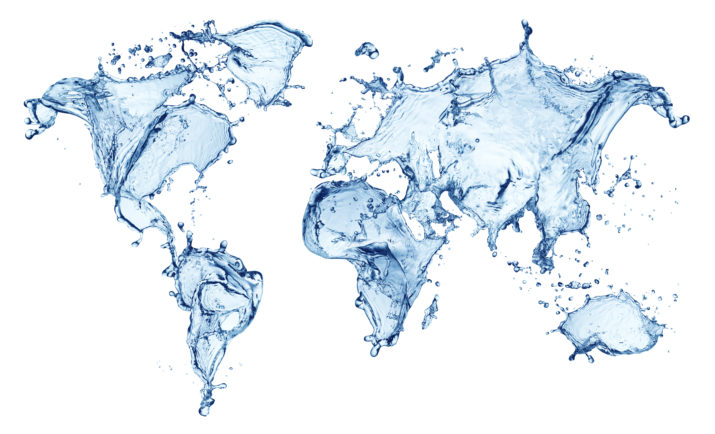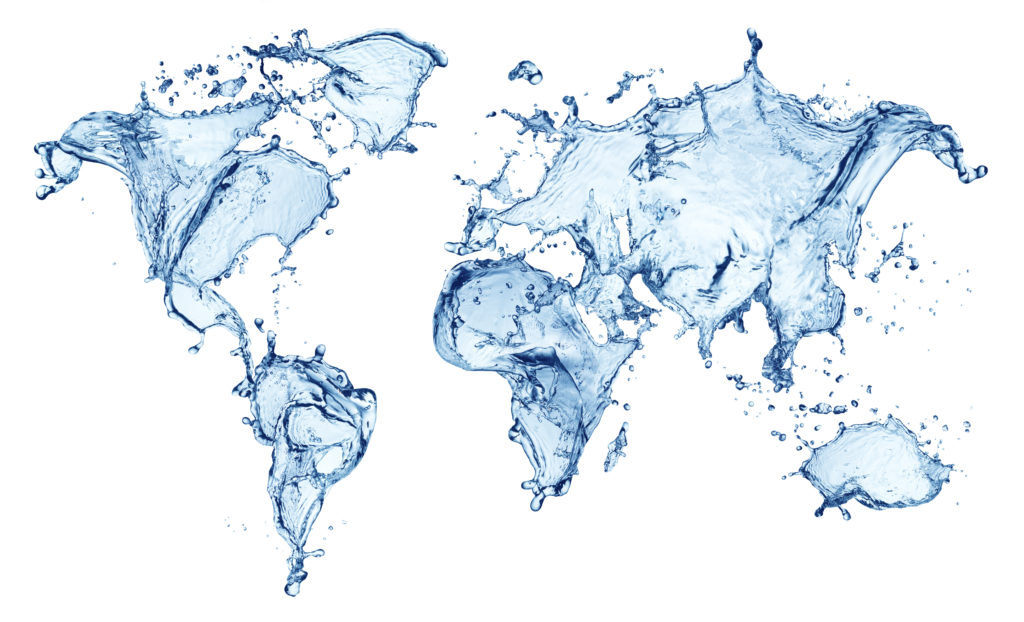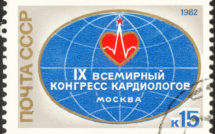
Water, Sanitation, Hygiene and Global Health

This is part of our Campus Spotlight on the University of North Carolina, Chapel Hill.
Inadequate access to safe water, sanitation and hygiene (‘WaSH’) is a major cause of preventable morbidity and mortality, and accounts for a substantive portion of the global burden of disease. Using the latest evidence to improve WaSH service in these settings is therefore the focus of major international implementation, policy, and research efforts. This course is a unique opportunity to learn from instructors and guest lecturers who are at the forefront of research, policy, and implementation on a topic of major global public health significance.
- Who has access to safely managed water, sanitation and hygiene?
- What health problems occur when these are absent?
- What approaches work best to improve these services?
- Why are improvements relevant in low-, middle-, and high-income countries?
Course Scope (content)
This course explores global challenges and opportunities related to the delivery of safe, sus-tainable, and adequate water, sanitation, and hygiene services. We review the occurrence and transmission of hazards and contaminants in the environment, their health consequences, and their control through engineering, management, and policy solutions at local, national, and international levels. We explore distal factors (water scarcity, climate change), and consider human rights and im-plementation science approaches to improving water, sanitation, hygiene, and health. The course is open to graduate students and upper-level undergraduates. It is an elective in the global health concentration for MPH program.
This course covers core issues and skills in WaSH and global public health in six units:
1) Major microbial and priority chemical hazards of public health concern, and the role of adequate water, sanitation, and hygiene in preventing exposure to and disrupting transmission of these hazards; 2) The concepts of safety, exposure, risk, and vulnerability in the context of risk assessment in setting health-protective standards and guidelines; 3) Engineering, behavioral, and management WaSH interventions, their impact on health outcomes, and issues of sustainability; 4) Different settings (households, schools, health care facilities, refugee camps, etc.) in which WaSH services are accessed, and the factors affecting their delivery in each of these, as well as distal determinants (climate change, population growth and migration, etc.) that modify hazards, exposures, and the effectiveness of interventions; 5) The role of implementation science and evidence-based practice in improving WASH programs; 6) Policy as a tool for improving global WaSH service delivery and health outcomes at the local, national, and international levels, and the challenges of using science to effectively inform policy.
This course builds on prior understanding of fundamental chemistry, biology, and statistics. A prior understanding of infectious and toxic hazards, disease causation and environmental transmission is beneficial, but not required.
Learning objectives
Students successfully completing this course will understand:
- The hazards causing WaSH-associated diseases
- The nature of the interventions available to assist control of this disease burden and the factors determining their efficacy and effectiveness, and the approaches taken and measures employed to ensure effective deployment of WaSH interventions in real-world settings
- The policy implications of the above at the national and global levels
- The principal analytical tools and methodological approaches that are used in exploring the above, including epidemiological methods, quantitative risk assessments, standard setting, quality improvement methods, burden of disease calculations, cost-benefit analyses, water safety plans, and others;
Successful students will also have developed the following skills:
- Interpreting and constructively criticizing associated evidence (literature);
- Assessing quality of evidence, synthesizing evidence and distilling ‘state of the art’;
- Conducting chemical and microbial risk assessments
- Conducting and interpreting program impact evaluations
- Applying quality improvement methods to WaSH programs
- Working effectively in teams to address complex challenges
- Communicating science and public health information effectively to different audiences
Eligibility and pre-requisites
This course is designed to be accessible to graduate students and upper- level undergraduate students with background in engineering or public health. Core knowledge of chemistry, biology, and statistics are required and would be satisfied by undergraduate or entry-level graduate courses in, for example, chemistry, biochemistry, microbiology, cell biology and statistics. Core knowledge of epidemiology and risk assessment are beneficial (as addressed in ENVR 430 for example).
Student numbers will be limited to approximately 25 in order to enable adequate discussion and group interaction. If numbers of applicants exceed this limit then selection will take account of early sign-up and the benefits of diversity of backgrounds within the group in accepting students.
Course Presentation
The flow of the course will generally follow that summarized in ‘course scope’ (above) and more specifically Table 1, [Link]. Preparatory readings for each session are identified on the accompanying reading list. Any amendments will be posted at least one week in advance.
Most sessions will take one of four formats:
- Faculty instructor-presentation-led
- Discussion based on prior reading with identified questions shared in advance
- Student-led discussion
- Guest lecturer
All session formats will include a substantive discussion component. Every student will be expected to demonstrate knowledge of the underlying science, key concepts and principles and quantitative elements covered in the course by making presentations, participating in discussion and completing written assignments.
Course materials
The textbook for this course is:
Bartram, Jamie, ed. Routledge Handbook of Water and Health. Routledge, 2015. Individual chapters can be read online through the UNC library website: http://search.lib.unc.edu/search?R=UNCb8385388.
Additional required and recommended preparatory readings will be identified for most sessions and assignments will also require additional literature search and further unspecified reading (on the student’s own initiative).
Course web site: (Sakai)
Grading
Summary:
- Written assignments: 40% (one term paper: 20%; two presentation summary reports: 10% each, 20% collectively).
- Class participation: 25% (presentations: 15% and discussion: 10%)
- Written exams: 25% (mid-semester)
- Teamwork exercise (‘public debate’) 10%.
Explanation:
Each student is expected to make brief (5 minute) individual or group presentations (in groups of no more than 3) based on preparatory readings and to lead discussion and respond to questions and comments for a number of sessions (student-led discussion sessions) during the course. Possible presentation topics and dates will be posted in advance, and students may sign up on a first-come first-served basis. Additional presentation opportunities may be requested.
- Quality of preparation and delivery of presentations (including timing, organization, clarity, appropriate use of visual aids and delivery [including maintaining audience interest]) will account for 15% of final grade (2 x 7.5%).
- Students are expected to have prepared presentation materials (for example a PowerPoint and/or presentation plan notes) and to upload these to the “Student Presentations” folder on Sakai prior to the presentation. Where presentations are made in groups, the presentation should reflect the work of all group members.
- Each student is expected to upload a written summary report, not exceeding 500 words, (excluding any references and up to one figure/illustration) to the “Student Summary Reports” folder on Sakai prior to making the presentation. The quality of these written summaries will account for 20% of final grade (2 x 10%).
- The quality of participation in discussion during all sessions will account for a further 10% of final grade. Each student should be prepared to make at least one comment, question, or intervention that advances the discussion during each week of the course. Students who struggle with this may wish to consider planning a few ideas for remarks and questions in advance.
- Term paper topics will be chosen from a list of possible assignment descriptions to be announced (students may also be allowed to select alternative topics upon request). Students are encouraged to work in groups. However, written submissions must reflect the original work of each individual student. Reports should be not greater than 4000 words.
- There will be one written comprehensive examination.
- Course attendees will develop and implement a ‘public debate’ on an issue of contemporary relevance in WaSH and global health. This exercise will assess skills in interpreting evidence, teamwork, communication to diverse stakeholders; and use of science and public health data to inform complex decision-making affecting WaSH and health. Attendees will agree roles in advance of the debate. This debate will take the place of a written final exam.
General comments on evaluation
In all assignments, it is the responsibility of the student to communicate effectively to the target audience. Where word limits and deadlines are set, they will be adhered to strictly (no credit for late work; text beyond word limits will not be graded).
Photo: Water droplet world | Shutterstock
Published on June 11, 2019




